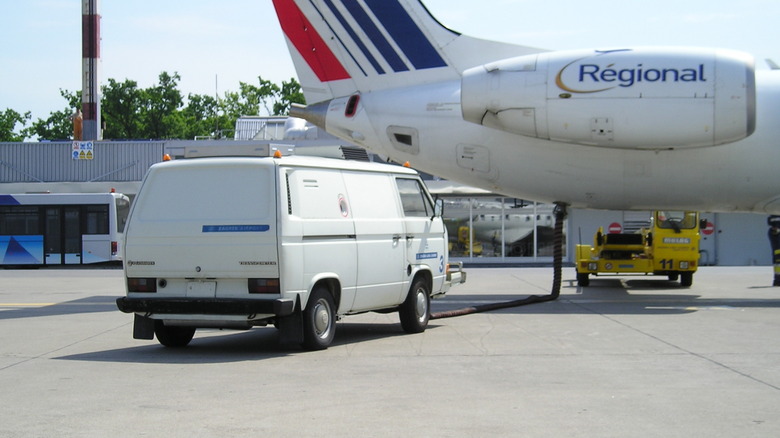What Is An Air Start Unit & Why Do Fighter Jet Engines Need Them?
A modern jet engine is a complex mechanical wonder. However, these aren't engines that will just roar into action with the turn of a key or the press of a button. Often, turbine engines will need external help to get going. This is the role of an air start unit (ASU), sometimes referred to as a start cart. To understand the role that ASUs play in starting a jet engine, it's useful to get a quick grounding in how jet engines work. Most modern jets use turbofan engines, which use a compressor to force air into a combustion chamber where it's mixed with fuel and ignited. Once it's running, it creates a self-sustaining cycle that sucks air in, ignites the air and fuel mixture, and uses the exhaust gases to generate thrust (although modern engines use bypass technology, meaning not all the incoming air passes through the combustion chamber). However, getting the cycle started requires the compressor to be spinning at a minimum speed.
This is where the ASU comes into play. In simple terms, it uses pressurized air delivered to a pneumatic starting system, which gets the engine spinning to a speed where the fuel can be injected and ignited. However, it isn't always needed. Most commercial passenger planes and modern jet fighters will use their Auxiliary Power Unit (APU). An APU is a small onboard engine used to start the main engines and power electrical systems. And it's when an airplane's APU is not working or its batteries are out of charge that the ASU becomes essential.
Why jet fighters might need an air start
Fighter jets come to life when they're in the air, freed from the burden of gravity; they are graceful, agile, and totally awesome. However, getting them into the air can be tricky, especially in older fighter jets. Today, most modern jet fighters like the F-22 Raptor, F-35 Lightning II, and the F/A-18 Hornet all boast APUs.
As with their commercial brethren, even fighters equipped with APUs may use an ASU to start their engines. While not exclusively, this usually happens when an APU has malfunctioned. Although it's an important component, a broken-down APU isn't considered a critical flight safety issue. Even commercial flights will continue to operate with the APU out of action. Of course, they will need the help of — you guessed it — an ASU to get started.
Additionally, although not a fighter, the incredibly long-serving B-52 Stratofortress is a USAF plane that will get to experience life on both sides of the APU fence. Currently, the plane relies solely on external methods like an ASU to fire up one or two engines; the running engines are then used to fire up the remaining engines. However, as part of the upcoming engine upgrade, B-52s are to be fitted with Honeywell 36-150 APUs, meaning the B-52 can drop its reliance on external help to take to the air. In short, most modern jets will rely on an internal power source to get their engines started. It's when these fail that jet fighters will need the help of an ASU.

